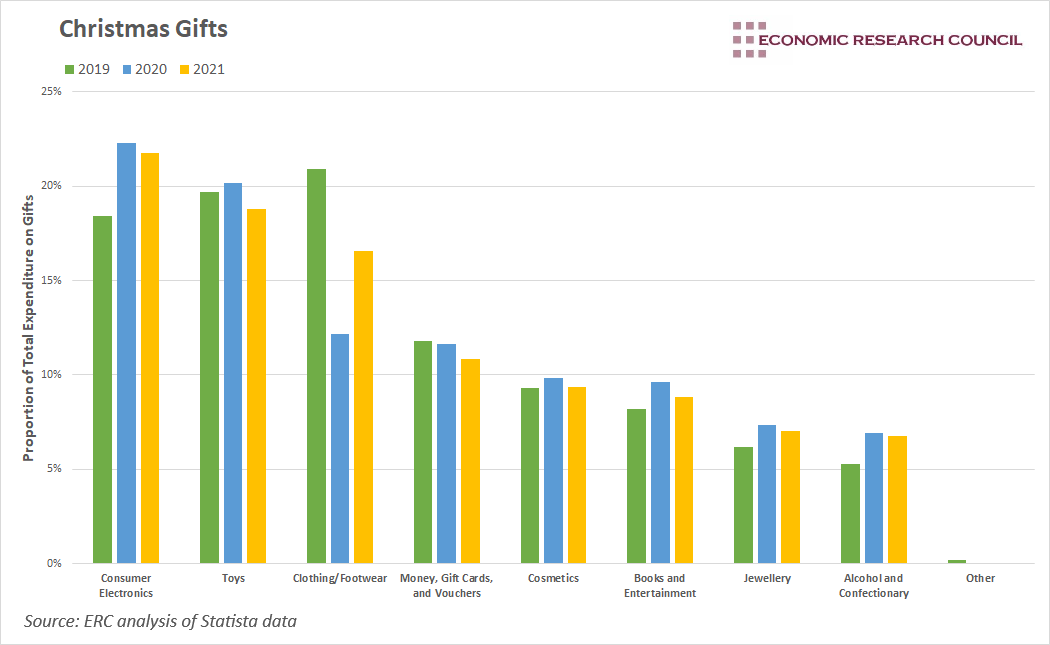Summary
The pandemic has affected countless aspects of our lives, but how has it altered our spending on gifts? This week’s chart shows a significant impact on expenditure on certain gifts in 2020, but this Christmas should kick start a reversal of the trend.
What does the chart show?
The chart displays the proportion of gift spending taken up by each category. Green bars represent 2019, whilst blue bars represent 2020 and yellow bars represent a forecast for 2021.
Why is the chart interesting?
Christmas of 2019 was the last that was not in some way affected by the pandemic and as such presents a useful angle from which to compare spending behaviour. As seen in the chart, there have been some large changes in the gifts that people decide to buy since the onset of the pandemic.
Consumer electronics were the largest beneficiary, as the proportion spent on this category shot up from 18.4% of all gift expenditure, to over 22%. It is forecast to contribute to just under 22% of all gift expenditure this Christmas. The data in the chart follows a pattern that has been present since the start of 2020. Lockdowns led to a greater focus on at-home entertainment, leading to an 18% sales growth in global consumer electronics in the first half of 2021. The spectre of omicron may yet mean the 2021 figures underestimate true expenditure on consumer electronics, as people consider the threat of future restrictions.
Expenditure on toys has remained at a high level, signalling the importance of Christmas to children, regardless of world events.
Clothing/footwear has seen the most dramatic shifts. In 2019 it was the category with the highest proportion of expenditure but nearly halved during Christmas 2020. Again, trends in Christmas gifts seem to have followed wider consumption. According to analysis by Statista, in April 2020 the volume of clothing and footwear sales were around 70% lower than their 2018 average. Sales failed to reach the 2018 average until April 2021. Spending on clothing and footwear gifts is forecast to increase this year, but fail to reach the level of 2019.
The effect of the pandemic on gift expenditure can also be seen in books/entertainment and Alcohol/confectionary. The realisation that significant amounts of time would be spent at home encouraged greater spending on goods that enabled people to enjoy their time at home.
It already seems as though the changes that occurred in 2020 are starting to reverse in 2021, suggesting that the pandemic will not have a sustained effect on the types of gifts that people purchase over Christmas.
By David Dike


